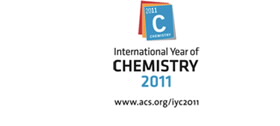EMBARGOED FOR RELEASE | March 30, 2011
First report on bioaccumulation and processing of antibacterial ingredient TCC in fish
Note to journalists: Please report that this research was presented at a meeting of the American Chemical Society
ANAHEIM, March 30, 2011 — In the first report on the uptake and internal processing of triclocarban (TCC) in fish, scientists today reported strong evidence that TCC — an antibacterial ingredient in some soaps and the source of environmental health concerns because of its potential endocrine-disrupting effects — has a “strong” tendency to bioaccumulate in fish. They presented the findings here today at the 241st National Meeting & Exposition of the American Chemical Society.
Bioaccumulation occurs when fish or other organisms take in a substance faster than their bodies can break it down and eliminate it. If a substance can be bioaccumulated, even minute and seemingly harmless amounts in the water can build up to toxic amounts inside the body.
Ida Flores, who presented the results, pointed out that all existing evidence indicates that TCC does not bioaccumulate in humans and certain other mammals. The human body quickly breaks down, or metabolizes TCC, changing it into other substances that exit the body in urine and feces.
Media Contact
During the meeting, March 27-31, the contacts can be reached at:
714-765-2012
Michael Bernstein
202-872-6042
m_bernstein@acs.org
Michael Woods
202-872-6293
m_woods@acs.org
The new study, however, suggests that the situation may be different for fish. They encounter TCC, found mainly in bar soaps, in water that washes down the drain and flows out of sewage treatment facilities into lakes and streams with a small amount of the TCC intact.
Along with a related ingredient called triclosan, TCC has been the source of controversy in recent years. Studies suggested that TCC and triclosan are no better than ordinary soap in preventing the spread of disease, and showed that the two substances have the potential to disrupt the activity of reproductive hormones.
“Due to its widespread usage, TCC is present in small amounts in 60 percent of all rivers and streams in the United States,” said study leader Ida Flores, of the University of California-Davis. “Fish are commonly exposed to TCC, even though much of it is eliminated by wastewater treatment plants.” Despite that widespread distribution in the environment, Flores and colleagues were surprised that only a few studies had investigated TCC’s role in aquatic ecosystems.
“Some of those showed that TCC does accumulate in the environment, and this compelled us to look at the environmental effects of TCC on fish — not simply seeing how it accumulates in fish but also how it is processed and eliminated,” Flores explained.
To find out, they exposed one-week-old larvae of medaka fish, an approach often used in research of endocrine disrupting effects to amounts of TCC similar to those found in natural waterways, and analyzed how the fish metabolized TCC.
“The fish quickly accumulated TCC,” Flores said. “The levels of the TCC in the fish soon after exposure were about 1,000 times higher than the concentration in the water. To the best of our knowledge, this is the first report of uptake and metabolism of TCC in fish species. We found evidence of strong accumulation and also got details on exactly how TCC is metabolized in these animals.”
Flores explained that details of TCC’s metabolism are important because they play a key role in understanding the health and environmental effects of TCC.
“Unmetabolized compounds, such as dioxins, can’t be excreted from the body,” Flores noted. “Those that can be metabolized pose decreased health risks because they can be excreted. Our major concern is accumulation of TCC in the environment and impacts on ecology by its potential endocrine disrupting effects.”
###

terial soaps and found in the nation’s rivers and
streams is easily absorbed by fish, a new study
suggests.


